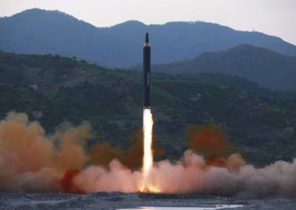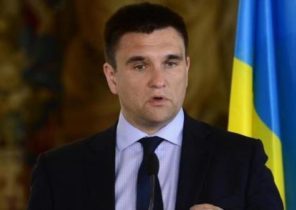In the town of Argun, located about 60 kilometers from the border of China with Russia, the Easter holiday last month, will be long remembered by father Paul sun Mine (Father Pavel Sun Ming). Because covid-19 he wasn’t able to open their Orthodox Church to celebrate the Resurrection of Christ. But last year’s Easter holiday in Argun exactly will go down in history. For the first time in more than 60 years of service in the Church conducted by a local resident. Father Paul had recently returned from Russia after ordained. Finally the congregation of Argun was again a priest.
Father Paul — only the second officially recognized Orthodox priest from the time when Mao Zedong tried to destroy the religion several years after his seizure of power in 1949. The first is Alexander Yu Shi (Shi Yu), who was ordained in Russia in 2015, and today is in Harbin, about 800 kilometers South-East of the Argun.
Before the seizure of power by the Communists, the Russian Orthodox Church had a strong position among the Russian living in the border areas of China. They intermarried with the Chinese, but some of their descendants, including Father Paul and father of Alexander, retained the religion of their ancestors. Today, less than 15 thousand Chinese citizens of Russian descent, speak Russian and even look like their Russian ancestors. However, the government considers them members of ethnic minorities. And calls them Russian.
Few of them are devout believers, but they retain the symbols of their Russian-ness. This is located on the outskirts of Argun, Inner Mongolia, the Church and represents this kind of symbol. On top of the building located a Golden cross beam, the bottom of which is slightly inclined. He had a domed roof of green, and the walls are Burgundy with white accents. The Church was built in the 1990-ies on the ruins of the Church of St. innocent of Irkutsk, one of the 18 churches which once existed in this city. Today, in addition to churches in Argun and Harbin, there are still only two, both located in the Western region of Xinjiang. The revival of these four churches after the dark period of Mao’s rule, was no easy task. The government in Beijing recognizes five religions — Buddhism, Taoism, Islam, and the two branches of Christianity — Catholicism and Protestantism. Orthodoxy is in a gray area and does not belong to any of these two currents. However, amid rapidly refined through the Sino-Russian relations in 1990-e years, the Chinese government began to support more robust informal contacts with his giant neighbor, including in the religious field.
Church in Argun took a lot of years to get permission to import the Russian Church utensils. However, in 2009, this permission was finally obtained. Four years later, the head of the Russian Orthodox Church Patriarch Kirill paid his first official visit to China, where he met with President of China XI Jinping. After that, the Chinese had the opportunity to study in Russian seminaries.
However, the Chinese authorities continue with caution to the Orthodox Church. Only the registered members Arnone have the right to go in there (even visiting the city of Russian citizens are forbidden to do it). Above the entrance there is a camera security system. As dryly admits father Paul, Christianity in China is “slightly sensitive” issue.







